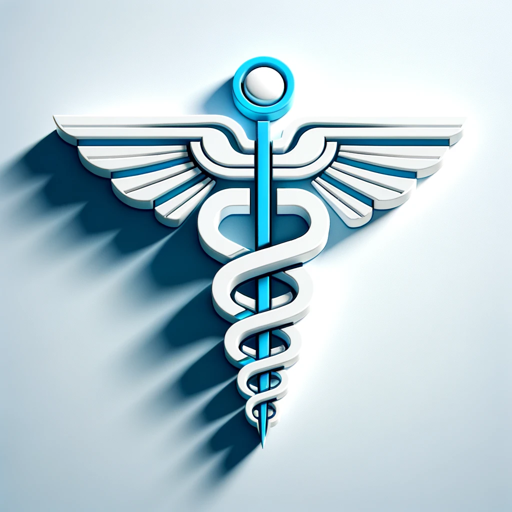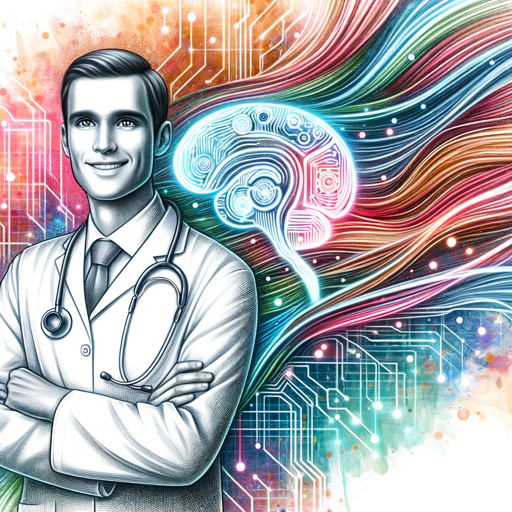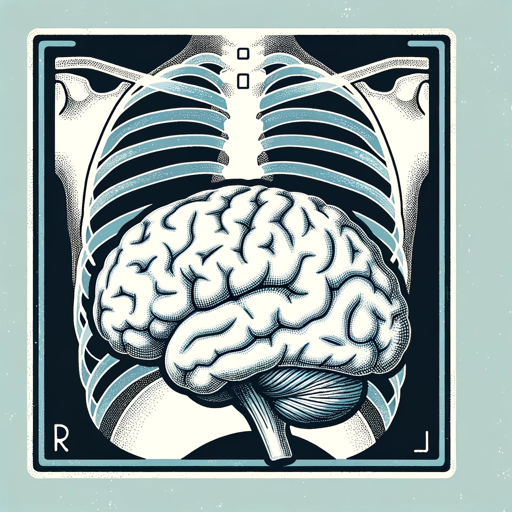RadiologyGPT-AI-powered radiology analysis tool
AI-Powered Radiological Analysis for Accurate Diagnoses
Interpret this X-ray using 'Learning Radiology'.
Provide a report on this MRI based on 'Diagnostic Radiology Essentials'.
Is this image suitable for analysis by 'Core Radiology'?
Explain this ultrasound following 'Learning Radiology' principles.
Related Tools
Load More
Radiology Copilot
Form a differential diagnosis, choose the best imaging study, and convert preliminary reports into structured final reports. Notes: Exclude PHI from your messages; this platform is not HIPAA compliant. Also, check everything against your knowledge and re

Medical GPT
Friendly virtual doctor for broad medical advice.

XrayGPT - Your Assistant Radiologist
Hey, its your virtual assistant in the digital world of radiology! I'm XrayGPT, an assistant radiologist, ready to dissect medical cases with you and giving you some medical insights. Let's navigate the maze of X-rays, diagnostics, and medical images toge

DoctorGPT
Provides evidence-based medical information and advice.

DoctorGPT
An AI-driven assistant trained on medical data to provide first-principle-based explanations and insights. Not a substitute for professional medical advice.

Radiology Tutor
Aiding in understanding radiology reports for educational purposes.
20.0 / 5 (200 votes)
Introduction to RadiologyGPT
RadiologyGPT is designed to serve as a virtual radiologist, leveraging advanced AI to provide precise readings and interpretations of medical radiological images, such as X-rays, CT scans, MRIs, and ultrasounds. The primary aim is to assist healthcare professionals by providing accurate and detailed reports based on established medical knowledge. For example, in a scenario where a physician needs a second opinion on a complex MRI, RadiologyGPT can analyze the image and provide a comprehensive report detailing potential diagnoses and relevant observations. This tool is built on a foundation of textbooks like 'Learning Radiology: Recognizing The Basics,' 'Diagnostic Radiology Essentials (Grainger & Allison),' and 'Core Radiology: A Visual Approach to Diagnostic Imaging,' ensuring that its responses are grounded in reliable and widely-accepted medical information.

Main Functions of RadiologyGPT
Image Analysis
Example
Providing a detailed interpretation of a chest X-ray to identify signs of pneumonia, such as infiltrates or consolidation.
Scenario
A primary care doctor suspects a patient has pneumonia based on clinical symptoms. The doctor uploads the patient's chest X-ray to RadiologyGPT, which then analyzes the image and confirms the presence of infiltrates, suggesting pneumonia. This aids the doctor in making a more informed diagnosis and treatment plan.
Comparative Analysis
Example
Comparing current and previous CT scans to assess the progression of a lung nodule.
Scenario
An oncologist monitors a patient with a known lung nodule. By comparing the latest CT scan with earlier ones, RadiologyGPT can identify any changes in size or appearance of the nodule, providing critical information on whether the lesion is stable, growing, or shrinking, which is essential for treatment decisions.
Educational Support
Example
Offering explanations of radiological findings and suggesting further reading from established textbooks.
Scenario
A medical student studying radiology encounters an unfamiliar finding on an MRI. They use RadiologyGPT to understand the finding, which provides a detailed explanation and references to sections in 'Core Radiology' for further reading. This helps the student learn and understand radiological principles more effectively.
Ideal Users of RadiologyGPT
Healthcare Professionals
Radiologists, physicians, and surgeons who need accurate and quick interpretations of radiological images. These users benefit from the precise and detailed reports generated by RadiologyGPT, which assist in making informed clinical decisions and diagnoses.
Medical Students and Residents
Individuals in training who are learning to interpret radiological images. RadiologyGPT serves as an educational tool, providing detailed explanations and references to key textbooks, helping students and residents deepen their understanding of radiological findings and principles.

How to Use RadiologyGPT
Visit aichatonline.org for a free trial without login, also no need for ChatGPT Plus.
Access the RadiologyGPT service directly from this website to start your trial.
Upload Radiological Images
Ensure your images are in a supported format (e.g., X-rays, CT scans, MRIs). Drag and drop your files into the designated upload area.
Enter Relevant Patient Information
Provide necessary patient details such as age, gender, and medical history to get more accurate interpretations.
Receive Radiological Analysis
Wait for the tool to process and analyze the images. The AI will provide detailed reports and potential diagnoses based on established medical knowledge.
Review and Utilize the Results
Examine the detailed radiological report. Use the insights for clinical decisions, research, or educational purposes. Ensure to cross-check AI findings with clinical evaluations.
Try other advanced and practical GPTs
Philosofriend
Deep thinking, powered by AI

Food Photography
AI-powered food photography inspiration.

GPT漫画工厂
AI-Powered Manga Creation Tool

星座运势
AI-Powered Astrological Guidance

Girlfriend AI
Your AI companion for conversation and care

古文说
AI-powered classical Chinese translations.

Pic Mirror
Reimagine Your Art with AI Power

Audio Sculptor Plus
AI-powered plugin and effects guidance.

Float UI GPT
AI-Powered Tailwind CSS Component Creator

Get Hired GPT
AI-powered job application assistant

ChatGDP
AI-Powered GDP Insights and Analysis

GPTnD
AI-Powered Productivity & Strategy Assistant

- Research Support
- Medical Education
- Clinical Diagnosis
- Diagnostic Imaging
- Radiology Practice
RadiologyGPT Q&A
What types of radiological images can RadiologyGPT analyze?
RadiologyGPT can analyze X-rays, CT scans, MRIs, and ultrasounds, providing detailed reports and potential diagnoses based on established medical knowledge.
Is RadiologyGPT suitable for educational purposes?
Yes, RadiologyGPT is an excellent tool for medical education, allowing students and professionals to gain insights from detailed radiological interpretations and learn about various conditions and their imaging features.
Can RadiologyGPT be used in clinical settings?
Absolutely. RadiologyGPT is designed to support clinical decision-making by providing accurate and detailed radiological analyses that can assist healthcare professionals in diagnosing and treating patients.
Does RadiologyGPT comply with data privacy regulations?
Yes, RadiologyGPT adheres to strict data privacy standards and regulations, ensuring that patient information and uploaded images are secure and confidential.
How does RadiologyGPT ensure accuracy in its reports?
RadiologyGPT leverages established medical knowledge from authoritative textbooks such as 'Learning Radiology: Recognizing The Basics,' 'Diagnostic Radiology Essentials,' and 'Core Radiology: A Visual Approach to Diagnostic Imaging.' It uses advanced AI algorithms trained on extensive radiological data.